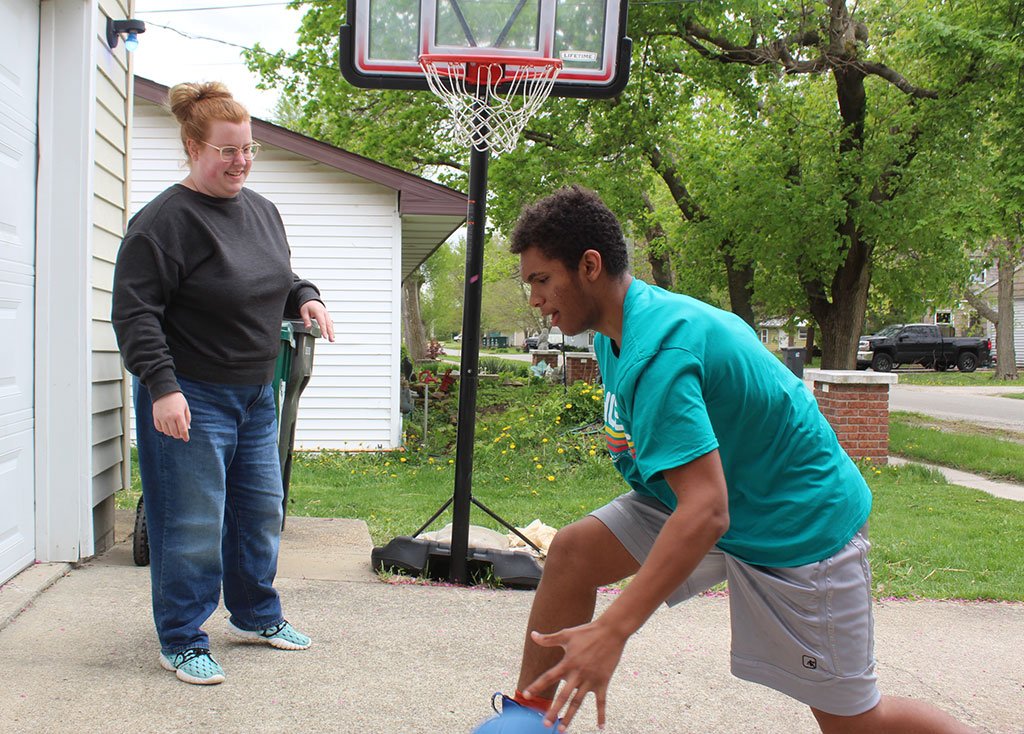
Listen:
VILLA GROVE, Ill. – Paper calendars line a wall inside a house in Villa Grove, a small town south of Champaign-Urbana.
The calendars help Meagan Quigley keep track of who will be watching her son each day. Her son Morgan has both autism and epilepsy – meaning he needs almost constant care.
Almost every day is labeled with the name of at least one caretaker. Alyssa Mariasy, who started looking after Morgan two months ago, is listed on several days this week.
Right now, she’s one of only two caregivers.
“We’re just trying to make sure he always has somebody, but he doesn’t always have somebody,” Mariasy said.
Morgan’s mother Meagan works several jobs, including massage therapy and bookkeeping, and averages about 60 hours a week. She turned to home care after he was kicked out of several daycare centers as a baby.
Experts in child care said the pandemic made it difficult for families throughout the country to find childcare. But for the families of children with disabilities, they said, it was even harder.
Meagan needs workers who can handle Morgan’s outbursts and keep him safe if he has a seizure, she said. And if she doesn’t have someone to watch Morgan, she can’t work.
That’s the situation she faced when the pandemic hit in 2020.
“I didn’t even know how I was going to pay my bills because I didn’t have any workers at all,” Meagan said. “It is a terribly stressful situation because being a single mom, I have to show up to work because I am the only breadwinner.”
The pandemic brought a national labor shortage – forcing many workers to stay home or find jobs with more security and less face-to-face contact. Around 10% of childcare workers, or 100,000 people, left the industry during the pandemic, according to data from the University of California at Berkeley.
There will be almost 4.5 million job openings in home healthcare nationwide in the next decade, according to data from the Paraprofessional Healthcare Institute. In the next three years, there will be almost 15,000 job openings for home healthcare positions in Illinois, according to the Projections Managing Partnership.
Childcare is Meagan’s biggest expense. It’s more than the cost of her rent, food and utilities combined, she said.
She struggles to find workers who will stick around and work for long periods of time. The constant change of workers isn’t just hard on her, she said. It’s hard on Morgan, too.
“Any lack of consistency in his routine causes more meltdowns, more challenges with regulating his emotions [and] more challenges with him even attending school,” Meagan said.



